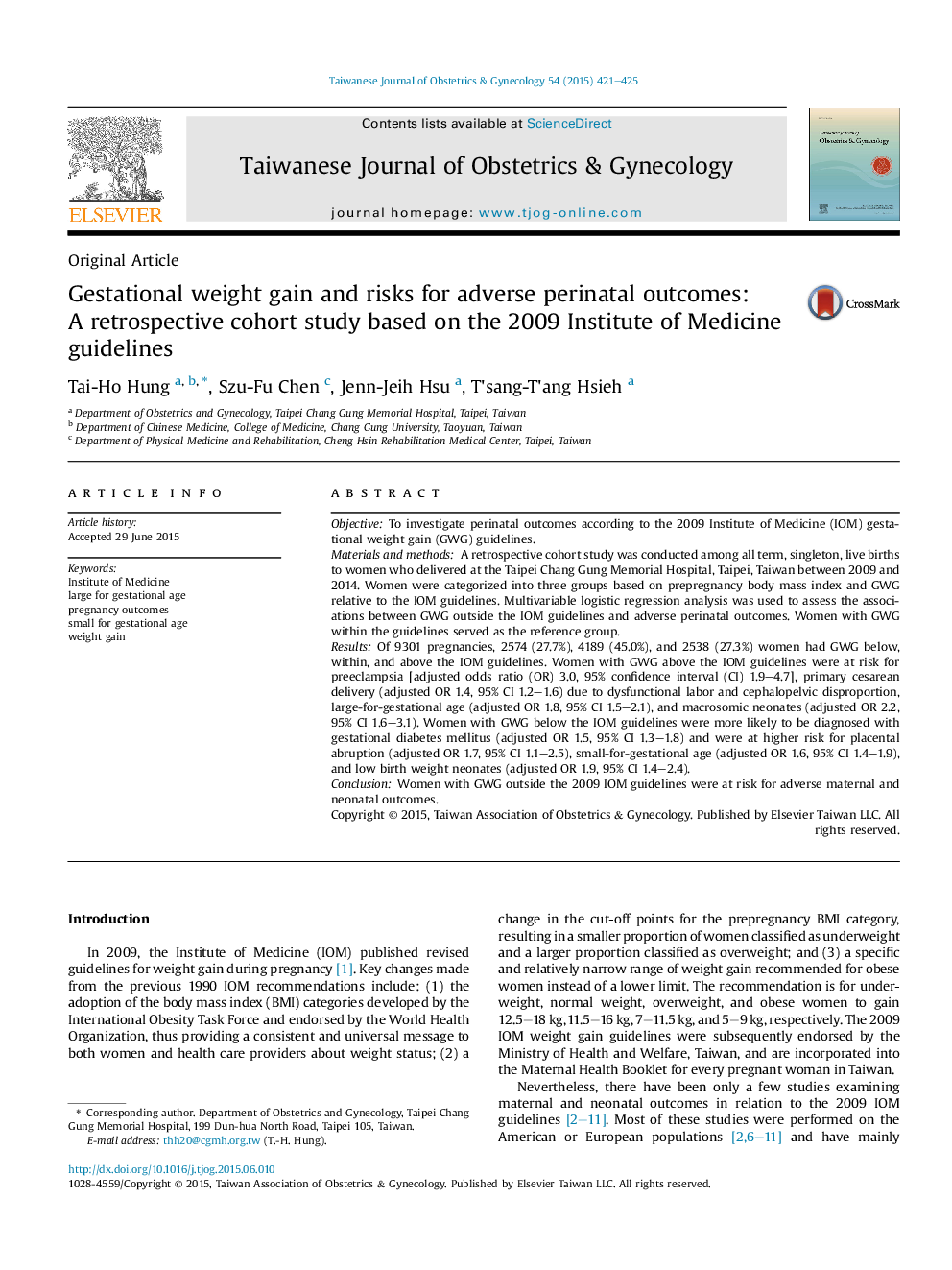| Article ID | Journal | Published Year | Pages | File Type |
|---|---|---|---|---|
| 3975061 | Taiwanese Journal of Obstetrics and Gynecology | 2015 | 5 Pages |
ObjectiveTo investigate perinatal outcomes according to the 2009 Institute of Medicine (IOM) gestational weight gain (GWG) guidelines.Materials and methodsA retrospective cohort study was conducted among all term, singleton, live births to women who delivered at the Taipei Chang Gung Memorial Hospital, Taipei, Taiwan between 2009 and 2014. Women were categorized into three groups based on prepregnancy body mass index and GWG relative to the IOM guidelines. Multivariable logistic regression analysis was used to assess the associations between GWG outside the IOM guidelines and adverse perinatal outcomes. Women with GWG within the guidelines served as the reference group.ResultsOf 9301 pregnancies, 2574 (27.7%), 4189 (45.0%), and 2538 (27.3%) women had GWG below, within, and above the IOM guidelines. Women with GWG above the IOM guidelines were at risk for preeclampsia [adjusted odds ratio (OR) 3.0, 95% confidence interval (CI) 1.9–4.7], primary cesarean delivery (adjusted OR 1.4, 95% CI 1.2–1.6) due to dysfunctional labor and cephalopelvic disproportion, large-for-gestational age (adjusted OR 1.8, 95% CI 1.5–2.1), and macrosomic neonates (adjusted OR 2.2, 95% CI 1.6–3.1). Women with GWG below the IOM guidelines were more likely to be diagnosed with gestational diabetes mellitus (adjusted OR 1.5, 95% CI 1.3–1.8) and were at higher risk for placental abruption (adjusted OR 1.7, 95% CI 1.1–2.5), small-for-gestational age (adjusted OR 1.6, 95% CI 1.4–1.9), and low birth weight neonates (adjusted OR 1.9, 95% CI 1.4–2.4).ConclusionWomen with GWG outside the 2009 IOM guidelines were at risk for adverse maternal and neonatal outcomes.
